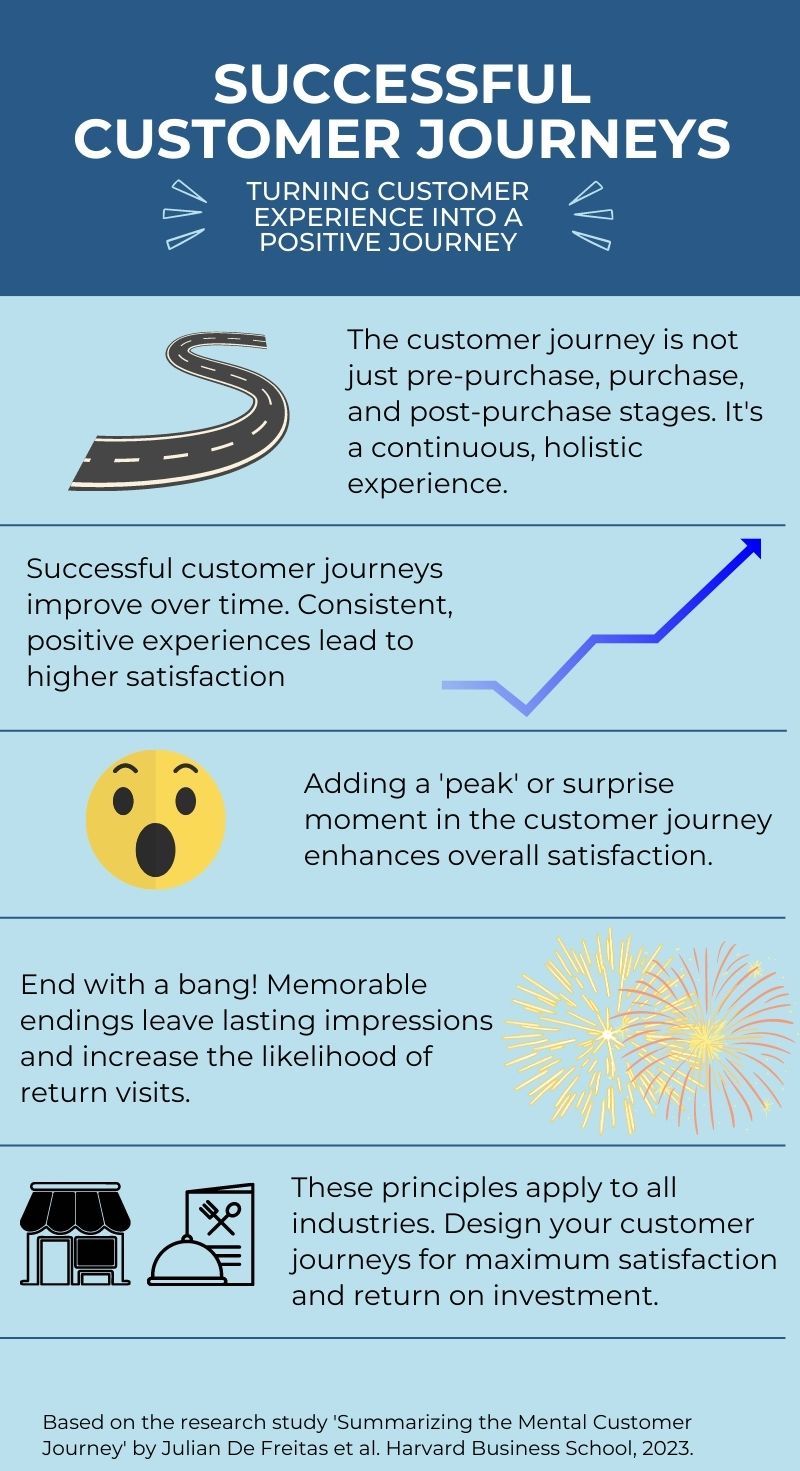
In the continually evolving marketing landscape, how a business manages customer experiences can significantly impact its success. A novel study by Julian De Freitas, an assistant professor at Harvard Business School, has unveiled noteworthy findings that enlighten how memorable customer experiences can be crafted to boost customer retention and overall business growth.
The research underscores the importance of ending customer experiences with a high note or a memorable event, echoing Disney World’s successful strategy of culminating the day with a grand fireworks display. This “ending with a bang” principle can significantly enhance the overall impact of a customer’s journey and their retrospective evaluation of the experience.
The traditional concept of customer experiences has been represented as a three-act play: pre-purchase, purchase, and post-purchase. Contrarily, this recent study approaches the customer journey from a more holistic perspective. The research found that the most successful customer interactions are ones that gradually improve over time, maintain consistency, and conclude with a satisfying ending. This finding is particularly significant in an era when marketing leaders are strategizing on efficient budget utilization.
However, the study’s insights reveal that not all features of a customer journey hold equal value. Some characteristics yield higher returns, allowing customer experience managers to concentrate on areas that matter the most when resources are constrained.
De Freitas and his colleagues created 27 different graphs to represent the customer journey. These graphs, portraying a range of customer experiences, were then presented to participants who rated them across different scenarios. In all these studies, clear patterns emerged. Participants preferred journeys that consistently remained positive or improved gradually over time, and ranked experiences the lowest when they either remained low or decreased over time.
Crafting Memorable Experiences
The study suggests three strategies for crafting memorable customer experiences. First, improving the customer experience steadily over time can enhance overall satisfaction. This doesn’t necessarily require additional expenditure but rather strategic organization of the offerings.
Second, adding an element of surprise during the journey can cement a positive customer experience. The surprise can take different forms and occur at any point in the journey, leaving a memorable impression on the customer.
Finally, the most crucial strategy is to end customer interaction on a high note, reinforcing the research’s main takeaway. It could be a thoughtful gesture or an act that goes the extra mile, leaving a lasting impression on the customer.
Adopting these principles—maintaining an upward slope in the customer journey, including at least one peak, and concluding with a memorable event—can ensure customers leave with a positive impression of their experience. This can significantly increase their likelihood of return, making higher purchases and sticking with the brand in the long term.
De Freitas cautions that indiscriminately investing across the entire customer journey may not be the smartest approach. Instead, he recommends focusing on areas that have the greatest impact on a customer’s impression of the experience. Such a strategy can provide a higher return on investment and promote long-term customer loyalty. The research conducted by De Freitas and his team is a significant step towards understanding the intricacies of memorable customer experiences and provides a useful guide for businesses aiming to foster customer satisfaction and loyalty.
What This Means for Marketers
The findings from this research have profound implications for how businesses approach and strategize their marketing efforts. They offer specific guidelines on how to shape memorable and effective customer journeys, let’s go over them:
- End with a Bang: Just as a captivating movie conclusion leaves an audience satisfied, ending a customer’s journey on a high note will leave a lasting impression. Businesses can think creatively about how to incorporate this strategy. This could mean a grand finale sale event, an exceptional customer service interaction, or a thank-you gift or message after purchase. The key here is to ensure the final interaction leaves the customer feeling valued and appreciated.
- Gradual Improvement: Customers are more satisfied with experiences that improve steadily over time. This insight can be incorporated into the design of loyalty programs, user interfaces, and long-term customer engagement strategies. For example, gradually introducing better benefits in a loyalty program or improving service quality over the duration of the customer lifecycle can lead to higher customer satisfaction.
- Memorable Surprises: Unexpected positive moments in the customer journey significantly enhance the overall experience. Marketers can leverage this by introducing surprise discounts, exclusive access to new products, or personalized gifts. These unexpected moments could be delivered via email, SMS, or any other marketing channel.
- Invest Wisely: Marketers need to focus their investments on areas of the customer journey that provide the most impact. Instead of equally distributing resources throughout the customer journey, focus on the areas that are most remembered by the customers – the beginning, peak moments, and particularly the end. This could result in a better return on investment and increased customer satisfaction.
- Customer Journey Mapping: Understanding that not all parts of the customer journey hold equal weight in the customer’s mind can help businesses better plot out their customer journey maps. They can then optimize those key moments that are most impactful.
- Listening to Customers: The language customers use to describe their experiences can be a less invasive but effective way to gather data about customer satisfaction. Sentiment analysis of reviews, social media posts, or customer service interactions can provide invaluable insights.

Reference:
De Freitas, Julian and Uğuralp, Ahmet Kaan and Uğuralp, Zeliha and Kim, Pechthida and Ullman, Tomer D., Summarizing the Mental Customer Journey (January 9, 2023). De Freitas, Julian, Ahmet Uğuralp, Zeliha Uğuralp, Pechthida Kim, and Tomer Ullman. “Summarizing the Mental Customer Journey.” Harvard Business School Working Paper, No. 23-038, January 2023., Available at SSRN: https://ssrn.com/abstract=4323837 or http://dx.doi.org/10.2139/ssrn.4323837

